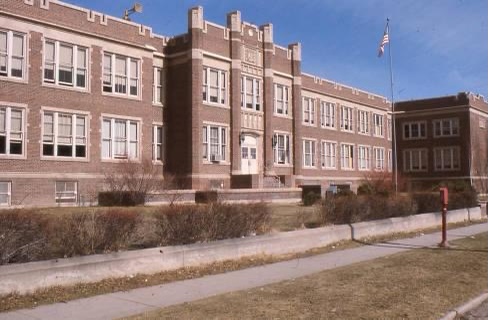Posted October 3, 2022
The City of Denver and Denver Public Schools (DPS) saw its early twentieth century schools as modern and efficient institutions of education, contributors to the lasting beauty of Denver, and centers for neighborhood activity. As such, DPS hired the city’s leading architects and landscape architect to create buildings and grounds employing the highest standards.
Architect W. Harry Edwards (1874-1946) was selected to design Skinner, and Arvid Nelson served as general contractor and builder. A Canadian by birth, Edwards came to Denver about 1901. His work in the city included the design of only one other school for DPS: West High School, completed after Skinner in 1925. One of DPS’s requirements for schools of the era was that window space would be equal to 25 percent of floor space; thus, students benefitted from excellent lighting and magnificent windows affording scenic views of the surroundings.
Landscaping of the schoolgrounds was provided by the celebrated Denver firm of Saco R. DeBoer, who had lived in the Berkeley neighborhood early in his career and worked on the design of Berkeley Lake Park, and his partner, Michiel Walter Pesman. Both were originally from the Netherlands. They were responsible for designing and supervising construction of the planting, grading, playgrounds, and other features of the grounds. In Denver, DeBoer and Pesman worked together on the city’s park, parkway, school, and residence landscapes, as well as city plans. Skinner’s landscape is cited as one of Pesman’s works displaying a regional influence and great understanding of native plants.
Skinner’s architecture is representative of the Collegiate Gothic style, an idiom Edwards also used for West High. The style was popular at the time for colleges and other school buildings. Golden brown “texture” wire-cut face brick for the walls was provided by the respected Golden Brick Company. The Denver Terra Cotta Co., famous for its high quality artistic terra cotta and utilized for many notable buildings, is displayed in the exterior’s ornamental trim. Many of the city’s well known craftsmen and suppliers contributed to the building with their highest quality supplies and talents, making it truly a Denver-produced building and a lasting legacy for the neighborhood.
